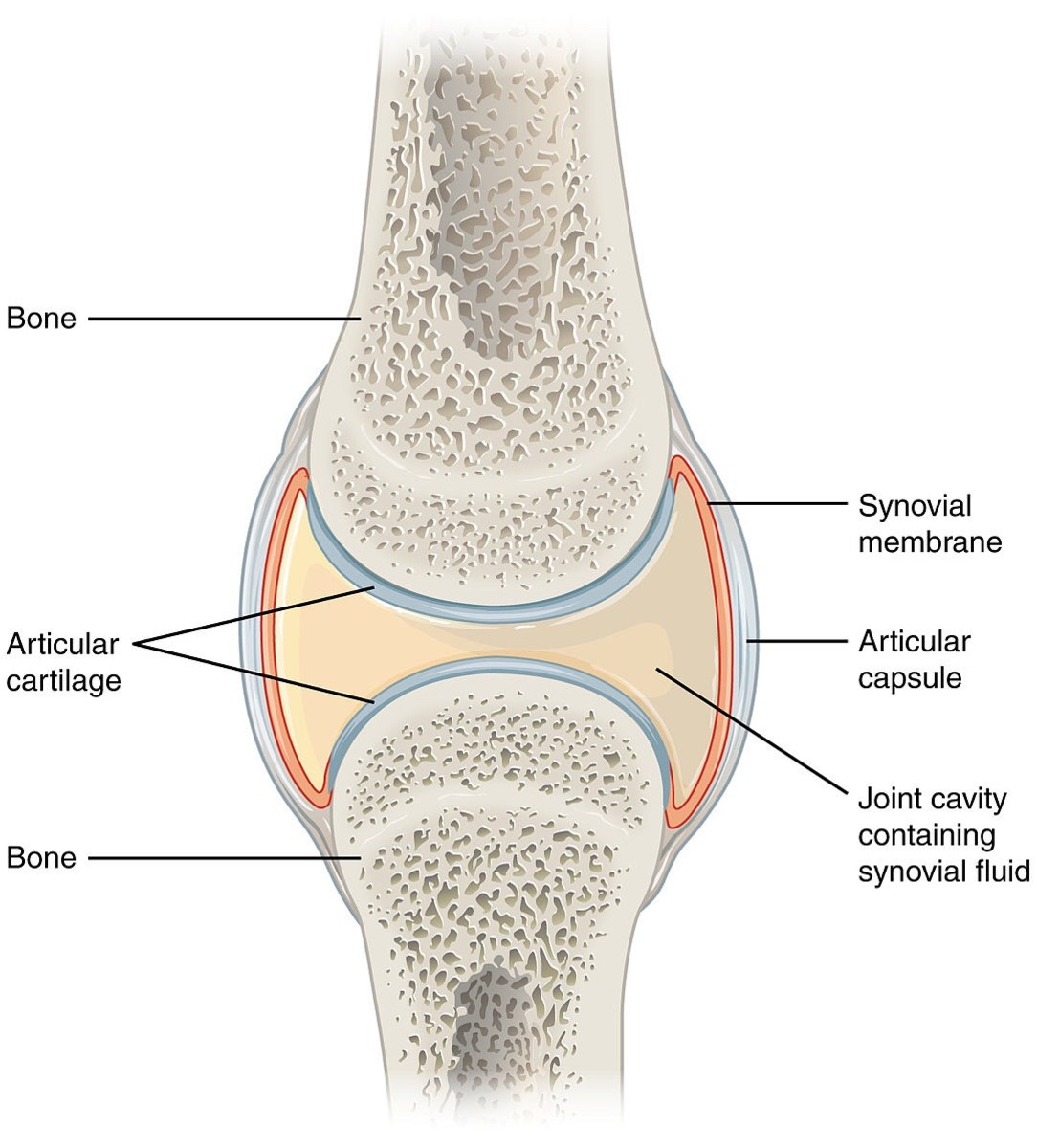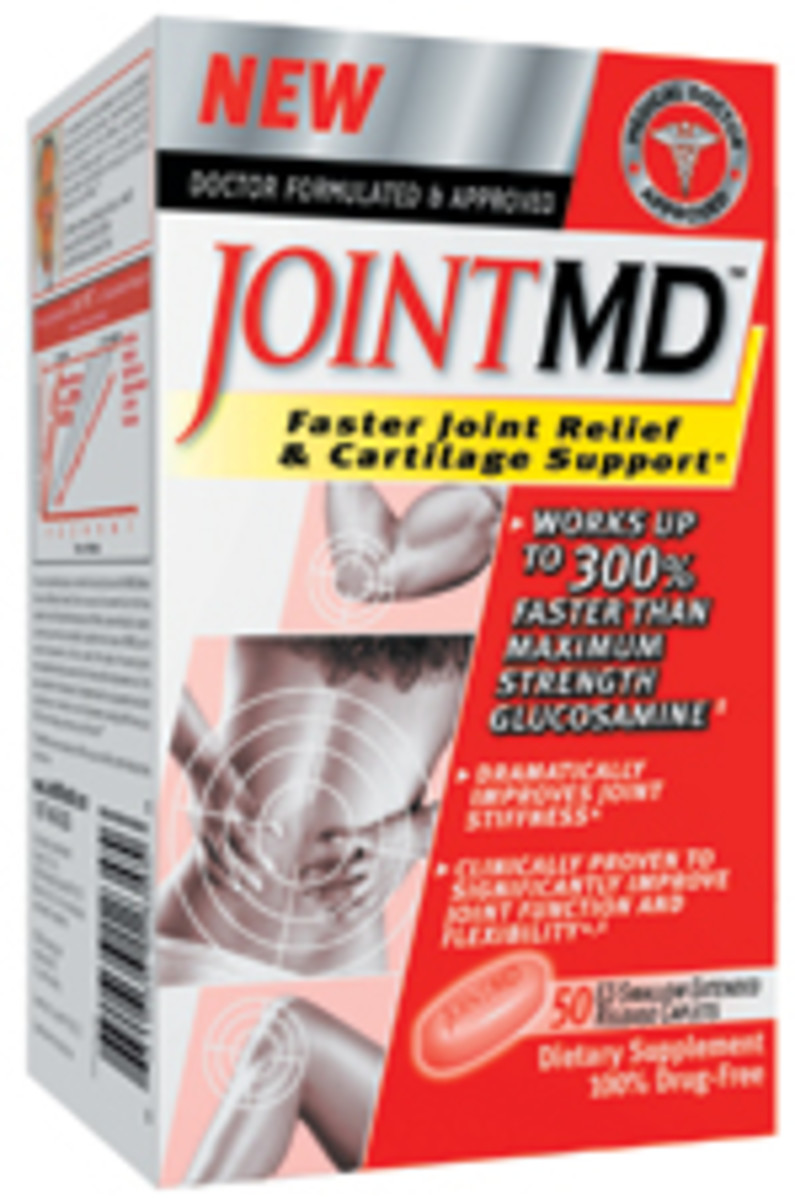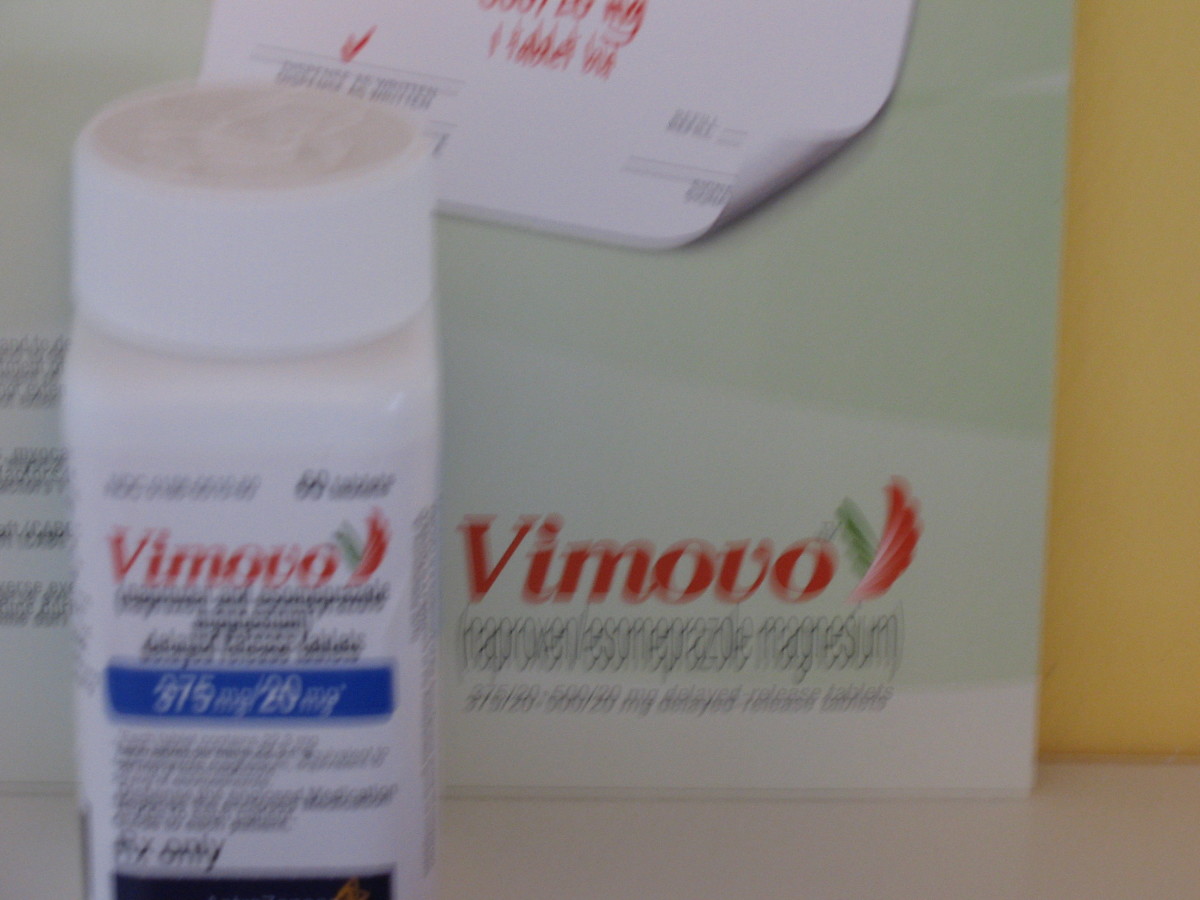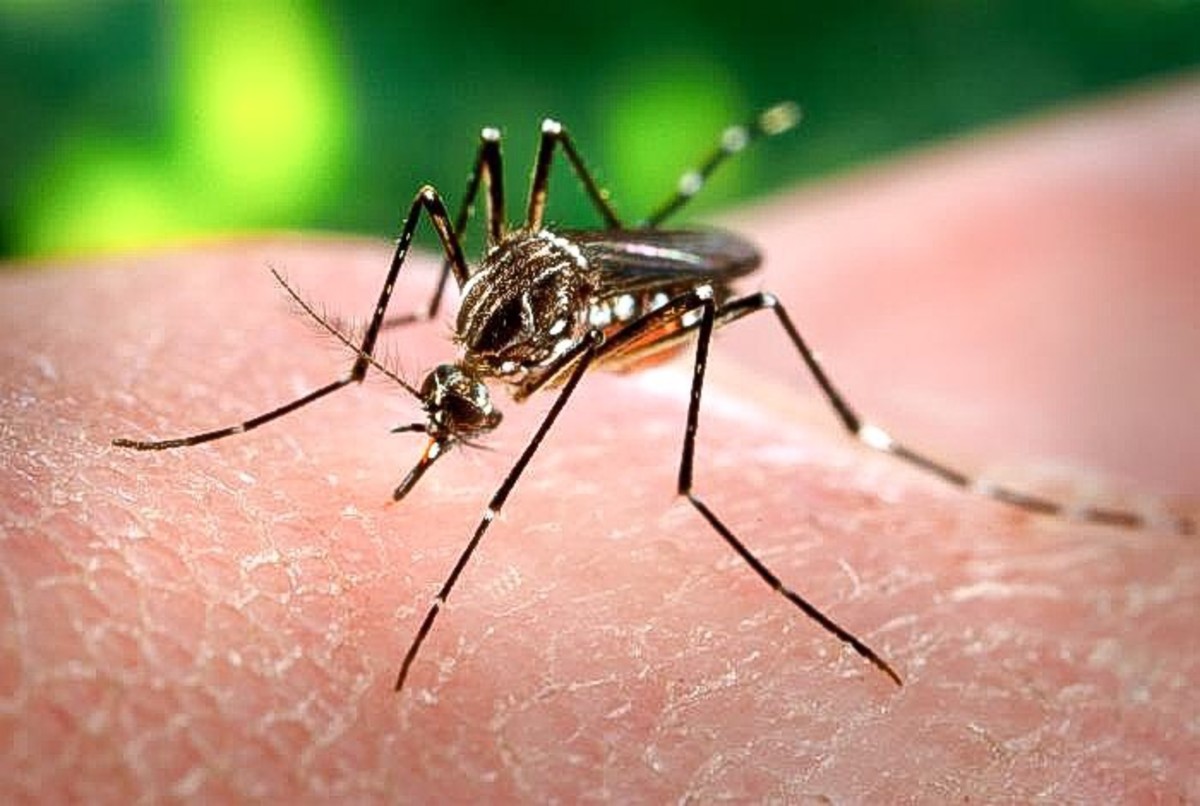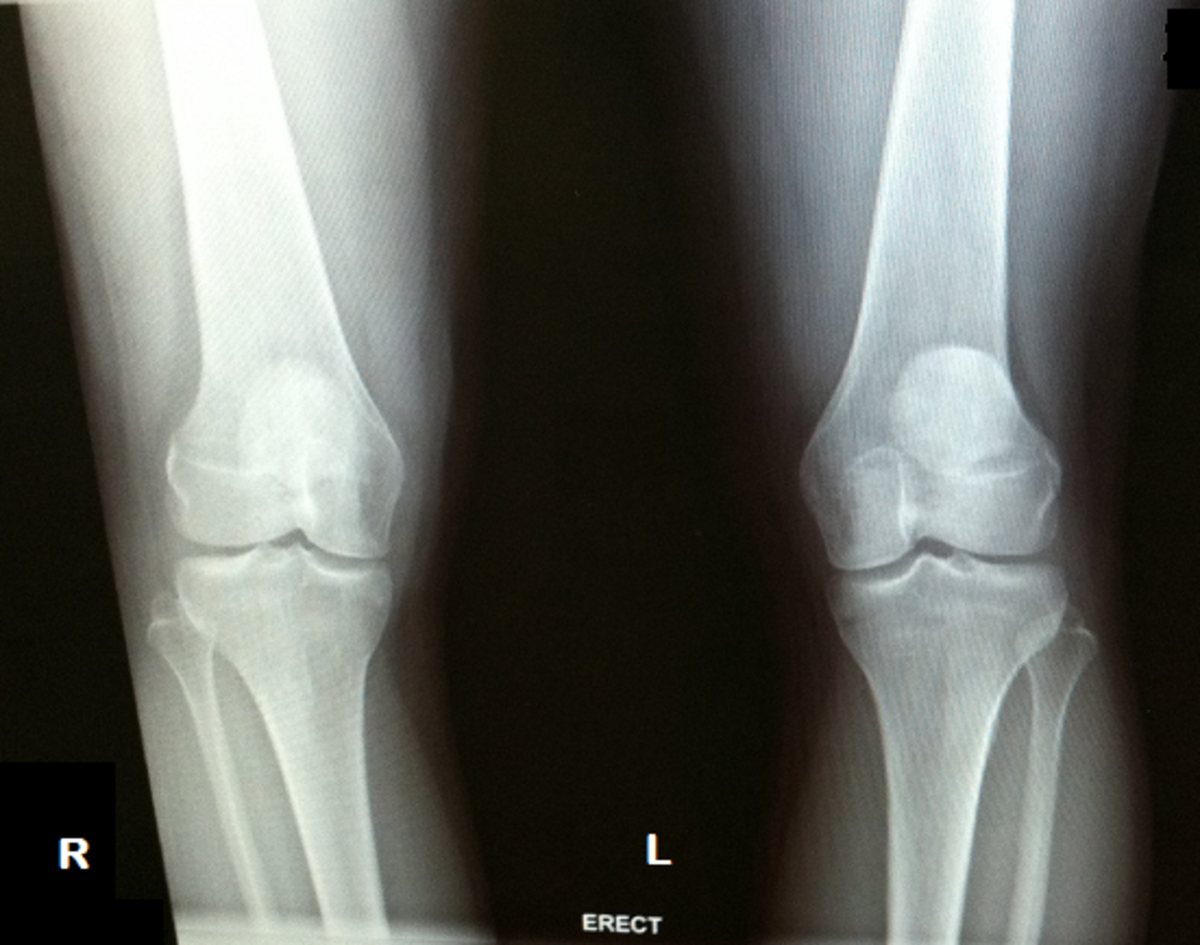Joint Pain - A Natural Approach
A Typical Joint
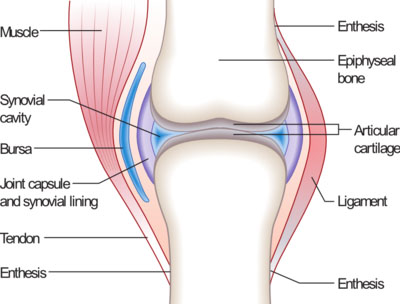
Discussion of Joint Pain
Joint pain can be caused by injury and also by various chronic problems. The causes include various forms of arthritis including the two main ones osteoarthritis and rheumatoid arthritis, and also gout, tendonitis and bursitis. It can also be caused by rare disorders such as “the bends” (suffered by deep-sea divers and also sometimes parachutists) and the crises that occur in sickle-cell anaemia.
The various causes of joint pain suggest various courses of action when dealing with it. I might add here that osteoarthritis and rheumatoid arthritis, although they sound similar, are actually distinct problems with very different ideal solutions. The occasional unlucky person may have both osteoarthritis and rheumatoid arthritis.
Injury
Joint pain caused by injury can be alleviated by painkillers and anti-inflammatories, of course, but the only really effective way of dealing with it is to deal with the injury. This may sound obvious, but a remarkably large number of people leave joint injuries far too long. The problem with this is that some joint injuries lead to chronic disorders if left; for example a damaged tendon may well lead to tendonitis.
There are far too many types of joint injury to cover here, but the point is that if you have injured a joint then you should seek professional advice as soon as possible if the injury is more than a minor one. Whether to seek such advice is a judgement call, of course. A rule of thumb might be that if you can’t move or use the joint at all then professional advice should be sought.
Osteoarthritis
Joint pain is often caused by osteoarthritis. One complication here is that osteoarthritis often starts after an injury. This may well be related to the chemical basis of many cases of osteoarthritis, which is lack of various biochemicals in the body.
Synovial fluid is the name for the fluid that provides lubrication for the joints and also keeps the bone ends apart; this fluid is contained in a fibrous capsule called the bursa. This fluid is largely composed of a glycoprotein complex of which a large proportion is various polymers of amino sugars including glucosamine. To a large extent, the various amino sugars can be converted into each other quite readily. The cartilage at the ends of the bones is also largely composed of such polymers, but in this case the polymers form a hard jelly-like substance instead of a slippery, sticky liquid.
The various amino sugars are produced in the body. When production is insufficient for the needs of the body’s repair and renewal systems, then various things happen. One of these things is that the synovial fluid becomes too thin to do its job properly; the situation becomes a little like the situation that might occur if one tried to lubricate a car engine with sewing machine oil. Wear of the bearing surfaces increases massively; in the case of joints in the body, this means that the cartilage in the joints begins to wear out and become rough. The body responds to this damage with inflammation and pain, and that is basically what osteoarthritis is.
The mechanism of osteoarthritis explains why it is usually older people and those who have injured their joints that get osteoarthritis. Production of amino sugars, like everything else in the body, gets less efficient as one gets older. Injury creates a greatly increased demand for them. Either can lead to the problems already discussed. It also explains why osteoarthritis usually starts first in the large, load-bearing joints.
Osteoarthritis can also be caused by another, rather different, disturbance in the metabolism. Sometimes, if there is not enough calcium in the body or not enough of various other minerals including magnesium and boron, the normally fairly smooth ends of the bones become roughened and start developing lumps and bumps. This excess bone is very weak - and not capable of bearing much stress - but is easily capable of creating damage and therefore inflammation and pain in the softer tissues around it. This problem, when it occurs in the spine, is called spondulosis. When this causes inflammation and pain, the problem is called spondulitis. By the way, the rather rarer and more severe ankylosing spondulitis is more akin to rheumatoid arthritis than to osteoarthritis.
Rheumatoid Arthritis
Rheumatoid arthritis is essentially an auto-immune problem. This statement is supported by the fact that people with rheumatoid arthritis often have other auto-immune problems such as Sjorgren’s syndrome, systemic lupus erythematosus (for obvious reasons often referred to as lupus or SLE) and various other degenerative inflammatory problems. Most natural practitioners agree that in many cases of rheumatoid arthritis, it is often associated with and probably caused by poor digestion and an over-permeable intestinal wall. This causes large protein fragments to be admitted into the bloodstream, where they over-stimulate the immune system. If this continues for long enough, the immune system begins to lose discrimination and starts attacking the body’s own tissues.
Gout
I have covered this in another one of my hubs, but in short gout is accumulation of uric acid crystals in various places and this includes the joints; for some unknown reason, the joint between the big toe and the rest of the foot is a particularly likely place to get this problem. The crystals, which are extremely hard and needle-sharp, irritate the soft tissue around them and subsequently cause inflammation and pain.
Tendonitis and Bursitis
These often occur together, and in any event the cause of them is similar. Tendons, often called sinews, are the strong, non-stretchy fibres that connect the muscles to the joints and also keep the joints themselves locked in place. The bursa is the capsule surrounding the joint. They are composed of similar material, largely composed of collagen. Both the tendons and the bursa have rather poor nutrient supply, because the immense pressures developed when the joints move under load would damage blood vessels and even blood cells if such vessels ran through tendons and the bursa. As a result, the flow of nutrients into these areas is not very efficient. This normally doesn’t matter very much, because the tendons and bursa are not very metabolically active. However, if they get damaged this does matter because the nutrients needed for repair are in short supply.
Unfortunately, if a tendon or bursa stays damaged for a fairly long time then one response by the body is to create deposits of mineral crystals (similar to the mineral crystals in bone) in the tendons and/or bursa. This causes further damage to the tendons and/or bursa, thus perpetuating the problem. For some unknown reason, deficiency in various minerals (including calcium, magnesium and boron) can make this course of events more likely.
Natural Remedies for Joint Pain
Glucosamine
Glucosamine deficiency in various parts of the body, including the joints themselves but also the intestinal lining, is the root cause of many problems that lead to joint pain. As mentioned earlier, production of glucosamine within the body gets less efficient as one gets older and sooner or later often becomes insufficient for the body’s requirements. Fortunately, glucosamine is fairly readily absorbed if it is present in the intestines; so one straightforward way of boosting the body’s supply is simply to take a supplement of it. Glucosamine supplements are readily available and not too expensive, but there are two possible problems. First of all, glucosamine is usually made commercially from the shells of shellfish such as crabs and prawns; this is one of the reasons why it’s cheap, but may lead to problems in someone allergic to such foods. However, glucosamine supplements not made from shellfish are also available although they are more expensive.
The second problem is that glucosamine is needed in fairly large quantities; much less than 1000mg per day is unlikely to have much effect, and this leads to the need to take large tablets or capsules.
Suggested dosage of glucosamine is 1000 mg per day as a preventative, or considerably more (3,000 to 6,000 mg per day) as a remedy. Glucosamine has few if any drug interactions, but one notable one is that it gives warfarin (Coumadin) a stronger effect and this might lead to problems.
Glucosamine works by enhancing the body’s repair processes, so its action is fairly slow; using it in combination with faster-acting agents may well be a good idea.
Boswellia
There are quite a lot of herbs with anti-inflammatory effects, but this is one of the best. This remedy is a water-soluble extract from the same plant (Boswellia serrata) that produces frankincense. Unfortunately, this makes it fairly expensive; but one advantage of boswellia over chemical anti-inflammatory drugs such as the NSAIDs is that it doesn’t cause gastritis and ulcers. In fact, boswellia tends to help with gastro-intestinal inflammation and is sometimes used in natural therapy for such problems as colitis and irritable bowel syndrome.
Cetyl Myristoleate (CMO) and Celadrin®
These two compounds (actually, both are fairly complex mixtures) are compounds of cetyl alcohol and various exotic fatty acids. They have similar anti-inflammatory effects to the essential fatty acids (EFAs) but are considerably longer-lasting in effect; after using either of these products for two or three months, many people can come off them for six months or more before needing to re-start use.
Essential Fatty Acids (EFAs)
Essential fats, particularly the omega-3 group typically found in fish oil, have anti-inflammatory effects. In addition, the vitamin D in cod liver oil helps calcium metabolism and may help in cases where the joint problem is caused by bony outgrowths in the joints.
Boron
This little-known mineral, recently discovered to be essential, helps in cases of abnormal mineral deposition such as spondulitis, heel spurs (which are basically spikes of bone growing out of the heel bone) and calcified tendonitis or bursitis. Boron also helps strengthen the bones, which can be important in spondulitis because that problem is often associated with weakened and crumbling vertebrae.

